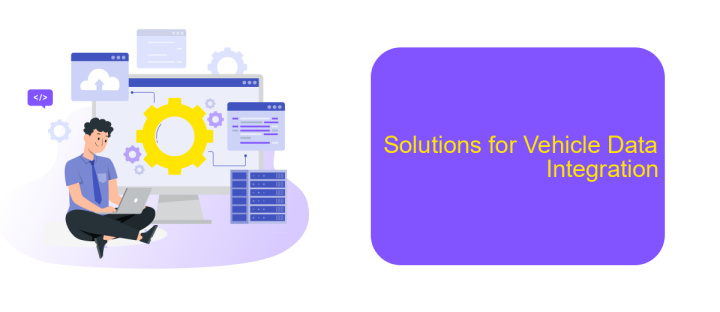Vehicle Data Integration
In the rapidly evolving automotive industry, vehicle data integration has become a cornerstone for enhancing performance, safety, and user experience. By seamlessly merging data from various sensors and systems, manufacturers and service providers can gain valuable insights, optimize operations, and deliver smarter, more connected vehicles. This article explores the key aspects and benefits of effective vehicle data integration.
Introduction
In the modern automotive industry, the integration of vehicle data has become essential for enhancing performance, safety, and user experience. With advancements in technology, vehicles are now equipped with numerous sensors and systems that generate vast amounts of data. Efficiently integrating and managing this data is crucial for manufacturers, service providers, and end-users.
- Improved vehicle diagnostics and maintenance
- Enhanced safety features and real-time monitoring
- Optimized fuel consumption and reduced emissions
- Personalized user experience and connectivity
One of the key challenges in vehicle data integration is ensuring seamless communication between various systems and platforms. Services like ApiX-Drive offer robust solutions for automating data integration processes, enabling real-time data synchronization across multiple applications. By leveraging such tools, stakeholders can achieve higher efficiency and reliability in managing vehicle data, ultimately leading to smarter and safer transportation solutions.
Benefits of Vehicle Data Integration

Integrating vehicle data offers numerous advantages, significantly enhancing operational efficiency and decision-making processes. By consolidating data from various sources, fleet managers can gain a comprehensive overview of vehicle performance, maintenance needs, and driver behavior. This holistic insight enables proactive maintenance scheduling, reducing downtime and extending the lifespan of vehicles. Additionally, real-time data integration supports optimized route planning, leading to fuel savings and reduced operational costs.
Moreover, vehicle data integration enhances safety and compliance by providing timely alerts on critical issues such as engine faults or unsafe driving practices. Services like ApiX-Drive can streamline the integration process, allowing for seamless data flow between disparate systems. This not only saves time but also ensures data accuracy and reliability. Ultimately, leveraging integrated vehicle data empowers businesses to make informed decisions, improve fleet performance, and boost overall productivity.
Challenges of Vehicle Data Integration

Integrating vehicle data presents numerous challenges that can hinder seamless data flow and utilization. These challenges are often technical, organizational, and regulatory in nature, requiring comprehensive strategies to address them effectively.
- Data Standardization: Vehicles generate data in various formats, making it difficult to standardize and integrate.
- Data Security: Ensuring the security of sensitive vehicle data during transmission and storage is a critical concern.
- Interoperability: Different vehicle systems and platforms may not communicate effectively, leading to integration issues.
- Scalability: As the volume of vehicle data grows, systems must be scalable to handle increased data loads.
- Compliance: Adhering to regulatory standards and data privacy laws can complicate the integration process.
To mitigate these challenges, leveraging integration platforms like ApiX-Drive can be beneficial. ApiX-Drive offers tools to automate data integration, ensuring data consistency and security. By utilizing such services, organizations can streamline the integration process, enhance data interoperability, and adhere to compliance requirements more effectively.
Solutions for Vehicle Data Integration

Vehicle data integration is essential for optimizing fleet management, improving vehicle performance, and ensuring safety. One effective solution is using cloud-based platforms that aggregate and analyze data from various sources. These platforms can process real-time data, offering insights that help in decision-making.
Another approach is employing middleware solutions that act as a bridge between different data sources and applications. Middleware can streamline data flow, ensuring that information is consistent and accessible across systems. This reduces the risk of data silos and enhances operational efficiency.
- Cloud-based platforms for real-time data analysis
- Middleware solutions for seamless data flow
- API integration tools like ApiX-Drive for connecting various data sources
- Data standardization protocols to ensure uniform data formats
ApiX-Drive, for instance, offers robust API integration tools that simplify the process of connecting different vehicle data sources. By automating data transfers and synchronization, ApiX-Drive helps in maintaining data integrity and reducing manual intervention. This leads to more accurate data analysis and better-informed decisions in vehicle management.
Future of Vehicle Data Integration
The future of vehicle data integration holds immense potential as advancements in technology continue to evolve. With the rise of connected vehicles and IoT devices, the seamless integration of data from various sources will become increasingly vital. This integration will enable real-time analytics, enhancing the efficiency and safety of transportation systems. The use of AI and machine learning will further revolutionize how data is processed and utilized, providing more accurate predictive maintenance and improving overall vehicle performance.
In this context, services like ApiX-Drive play a crucial role in simplifying the integration process. ApiX-Drive offers a platform that allows for easy connection of various data sources without the need for extensive coding knowledge. This service helps streamline data workflows, ensuring that vehicle data can be effectively integrated and utilized across different applications. As the industry moves forward, such tools will become indispensable in managing the complex web of data generated by modern vehicles, ultimately leading to smarter and more efficient transportation solutions.
FAQ
What is Vehicle Data Integration?
Why is Vehicle Data Integration important?
What types of data can be integrated from vehicles?
How can I automate the integration of vehicle data into my existing systems?
What are the challenges of Vehicle Data Integration?
Time is the most valuable resource for business today. Almost half of it is wasted on routine tasks. Your employees are constantly forced to perform monotonous tasks that are difficult to classify as important and specialized. You can leave everything as it is by hiring additional employees, or you can automate most of the business processes using the ApiX-Drive online connector to get rid of unnecessary time and money expenses once and for all. The choice is yours!

